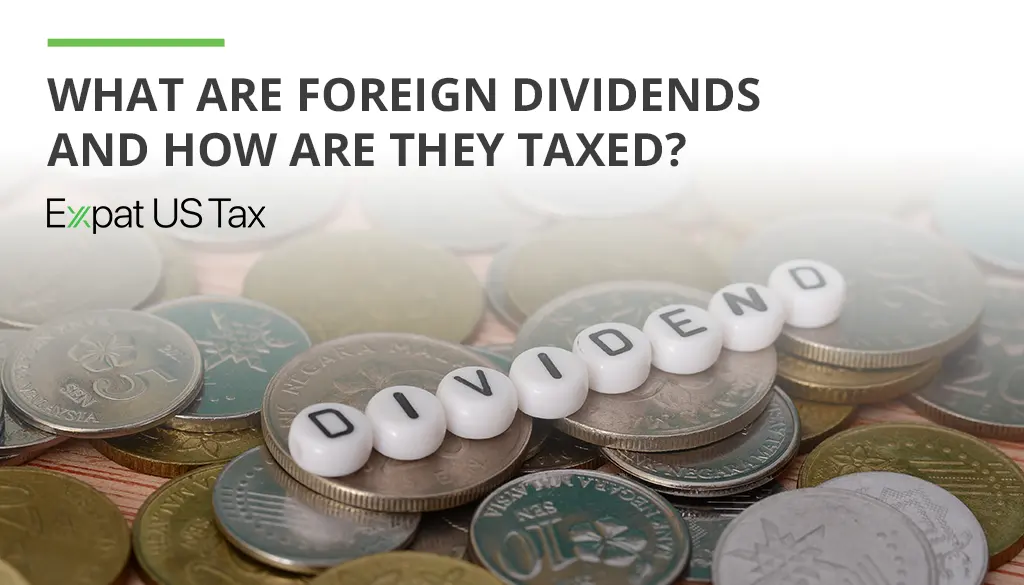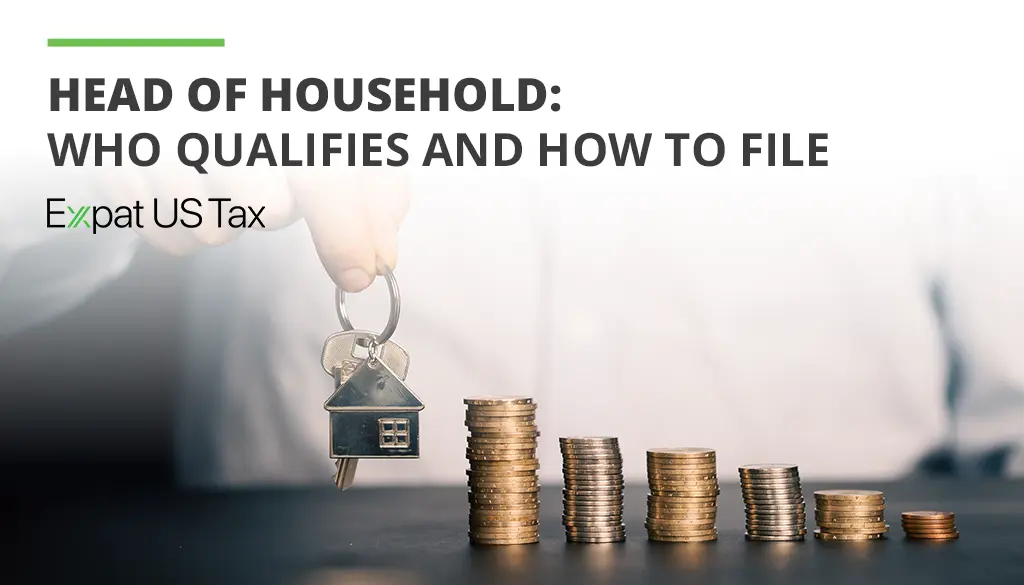What are foreign dividends and how are they taxed?


Aya Takriti, an IRS Enrolled Agent with 11 years of expat tax experience, specializes in US tax preparation, tax planning and tax advice for US citizens and Green Card holders living and working in the Middle East. *Schedule a consultation with Aya today.
*30-minutes US$247.
Table of Contents
What are foreign dividends and how do they affect your US taxes?
Foreign dividends are payments you receive from owning shares in companies outside the US. The IRS treats them just like dividends from US companies, which means they’re taxable no matter where you live.
How are foreign dividends taxed for US expats?
No matter where you live, if you’re a US citizen, green card holder, or otherwise treated as a US person, the IRS wants to know about all your income. That includes foreign dividends. You’ll report them on Form 1040; in many cases, you’ll also add Schedule B if your dividends and interest go over US$1,500.
What if I reinvest the dividends instead of taking them in cash?
Doesn’t matter. Just because you didn’t “cash out” doesn’t mean it’s not taxable income. You still report the full amount.
Also.
You might have already paid foreign tax first
Many countries automatically withhold tax when they pay dividends to non-residents. That means your final payout is smaller because some tax was already taken out before the money even hit your account.
Additionally, even if you paid withholding abroad, the IRS makes you report the gross dividend amount, the full value before foreign taxes. Then you may owe additional US tax on top.
Qualified vs. ordinary foreign dividends
Some foreign dividends are treated the same as qualified dividends from US firms and get more favorable tax rates, think 0%, 15%, or 20%, depending on your income bracket. But to qualify, the stock and your holding period usually need to meet specific IRS requirements. Otherwise, dividends are taxed at your regular income rate, which can be as high as 37%.
Other possible tax layers
If you’re earning a lot, say over US$200,000 as an individual, Net Investment Income Tax (NIIT) might kick in. That’s an extra 3.8% tax on investment income, including dividends.
Reporting foreign dividends on your US tax return
You’ll list your foreign dividends on Form 1040, and if your total dividends and interest go over a certain amount (currently US$1,500), you’ll also need to complete Schedule B. This form asks for details about foreign accounts and income, so make sure you have the right information handy.
Another step is converting your foreign dividends into US dollars.
The IRS doesn’t accept foreign currencies on tax forms, so you’ll need to use an approved exchange rate. You can choose the yearly average exchange rate or the rate on the date you received the dividend, but whichever method you pick, stay consistent throughout your return..
The impact of foreign tax credits and treaties
If the country where you live or invest takes taxes out of your dividend payments, you might not be stuck paying tax twice. The IRS lets you use the Foreign Tax Credit to offset those foreign taxes.
To claim it, you’ll file Form 1116 with your return. Let’s say you paid US$500 in foreign taxes on dividends. That US$500 can reduce your US tax bill on the same income. If you paid less than US$300 (or US$600 for joint filers), you might not even need Form 1116, you can claim the credit directly on your Form 1040.
Tax treaties with Australia, the UK, and Canada
Tax treaties between the US and certain countries can also impact how much foreign tax is withheld on your dividends.
- Australia: Dividends here often come with “franking credits,” but those don’t count for US taxes. You’ll still need to report the gross dividend amount and claim the Foreign Tax Credit for any tax withheld.
- UK: The US-UK treaty generally limits withholding tax on dividends to 15 percent, so you may end up paying less foreign tax upfront.
- Canada: The treaty with Canada also caps withholding tax rates on dividends, which can make it easier to claim the credit on your US return.
What if there’s no tax treaty?
Even without a treaty, you can still use the Foreign Tax Credit to reduce or eliminate double taxation.

Get expert advice on reporting foreign dividends in your US taxes.
Common pitfalls US expats face with foreign dividend income
One big issue many US expats don’t see coming is the Passive Foreign Investment Company (PFIC) rules. If you’ve bought into foreign mutual funds or ETFs, there’s a good chance they’re considered PFICs under US tax law.
PFICs come with extra reporting requirements and sometimes harsh tax treatment. You may need to file Form 8621 and deal with rules that can make your tax bill higher than expected. Even if you didn’t sell the investment, the IRS might still tax you as if you had gains. That’s why many expats avoid foreign funds altogether and stick to US-based investments.
Another common issue is double taxation. This happens when you’re taxed by both the country where the dividends came from and by the US. If you don’t claim the right credits or exclusions on your US return, you could end up paying tax twice on the same income.
Strategies for reducing US tax on foreign dividends
Choose tax-efficient investments
One way to simplify things is to stick with US-based mutual funds or ETFs. These generally don’t fall under PFIC rules and are taxed more favorably. If you prefer investing abroad, look into assets from countries that have tax treaties with the US.
These treaties often lower the amount of foreign tax withheld on your dividends, making it easier to claim credits and avoid double taxation.
Understand qualified vs. non-qualified dividends
Not all dividends are taxed the same. Qualified dividends are taxed at lower rates: 0%, 15%, or 20%, depending on your income. To qualify, the dividend usually needs to come from an eligible company and meet holding period rules.
Non-qualified dividends, on the other hand, are taxed at your regular income tax rate, which could be as high as 37%.
US brokers often tell you if they are qualified dividends. For foreign dividends, it depends on the company and your investment details. When in doubt, check with your broker or a tax advisor.
Use the Foreign Tax Credit wisely
If your foreign dividends were already taxed in another country, you can claim a Foreign Tax Credit on your US tax return. This credit helps reduce or eliminate your US tax on the same income. For small amounts of foreign tax (less than US$300 for single filers or US$600 for joint filers), you might not even need the extra form and can claim the credit directly on your Form 1040.
FAQ'S
Do I need to report foreign dividends if they were reinvested automatically?
Yes. Even if the dividends were reinvested and you didn’t receive cash, the IRS still considers them taxable income and they must be reported.
Can I skip reporting foreign dividends if the total was very small?
Will my foreign bank or broker report my dividends to the IRS?
Can I choose to exclude foreign dividend income using the Foreign Earned Income Exclusion (FEIE)?
What happens if I don’t report foreign dividends?



